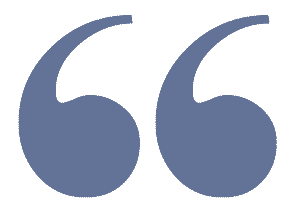An Article for Playing with Moderation Functionality


One of the strangest ideas of physics.

The world, in a sense, may be a hologram. The idea comes from black hole physics. In the 1970s researchers knew that when an object becomes part of a black hole, two things happen. One, all the detailed information about that object is lost. And two, the surface area of the black hole's event horizon (the point of no return for infalling matter and energy) grows. The first fact seemed to violate the second law of thermodynamics, because one of the lost details was the object's entropy, or the information describing its microscopic parts. But the second fact offered a way out: if entropy must always grow, and a black hole's surface area must too, perhaps for the black hole they are one and the same, and information is somehow stored on the horizon.
Fast forward to 1993. Two particle physicists working separately conclude that the universe itself must store information in a similar way. Quantum mechanics starts with the assumption that information is stored in every volume of space. But any patch of space can become a black hole, nature's densest file cabinet, which stores information in bits of area. Perhaps, then, all that's needed to describe a patch of space, black hole or no, is that area's worth of information. The idea is called the holographic principle, after the way that a hologram encodes 3D information on a 2D surface.
Recently, Raphael Bousso, while at Stanford University, helped formulate a more precise and more broadly applicable statement of the principle that involves light rays. "The world doesn't appear to us like a hologram, but in terms of the information needed to describe it, it is one," Bousso says. "The amazing thing is that the holographic principle works for all areas in all space times. We have this amazing pattern there, which is far more general than the black hole picture we started from. And we have no idea why this works. What this is telling us is, there is a description of the world we should be looking for which will be more economical than the one that we have right now, and will presumably have to do with quantum gravity."

Offering a comment to test moderation.
If you’re thinking that filler text seems pretty boring and uncontroversial, you’d be wrong. Surprisingly, there is a very vocal faction of the design community that wants to see filler text banished to the original sources from whence it came. Perhaps not surprisingly, in an era of endless quibbling, there is an equally vocal contingent of designers leaping to defend the use of the time-honored tradition of greeking.
This will just slow down the design process. Design first, with real content in mind (of course!), but don’t drop in the real content until the design is well on its way. Using filler text avoids the inevitable argumentation that accompanies the use of real content in the design process. Those opposed to using filler text of any sort counter by saying: The ultimate purpose of any digital product, whether a website, app, or HTML email, is to showcase real content, not to showcase great design. You can’t get a true sense for how your content plays with your design unless you use the real thing!
Testing Testing
If you’re thinking that filler text seems pretty boring and uncontroversial, you’d be wrong. Surprisingly, there is a very vocal faction of the design community that wants to see filler text banished to the original sources from whence it came. Perhaps not surprisingly, in an era of endless quibbling, there is an equally vocal contingent of designers leaping to defend the use of the time-honored tradition of greeking.
This will just slow down the design process. Design first, with real content in mind (of course!), but don’t drop in the real content until the design is well on its way. Using filler text avoids the inevitable argumentation that accompanies the use of real content in the design process. Those opposed to using filler text of any sort counter by saying: The ultimate purpose of any digital product, whether a website, app, or HTML email, is to showcase real content, not to showcase great design. You can’t get a true sense for how your content plays with your design unless you use the real thing!
If you’re thinking that filler text seems pretty boring and uncontroversial, you’d be wrong. Surprisingly, there is a very vocal faction of the design community that wants to see filler text banished to the original sources from whence it came. Perhaps not surprisingly, in an era of endless quibbling, there is an equally vocal contingent of designers leaping to defend the use of the time-honored tradition of greeking.
This will just slow down the design process. Design first, with real content in mind (of course!), but don’t drop in the real content until the design is well on its way. Using filler text avoids the inevitable argumentation that accompanies the use of real content in the design process. Those opposed to using filler text of any sort counter by saying: The ultimate purpose of any digital product, whether a website, app, or HTML email, is to showcase real content, not to showcase great design. You can’t get a true sense for how your content plays with your design unless you use the real thing!
If you’re thinking that filler text seems pretty boring and uncontroversial, you’d be wrong. Surprisingly, there is a very vocal faction of the design community that wants to see filler text banished to the original sources from whence it came. Perhaps not surprisingly, in an era of endless quibbling, there is an equally vocal contingent of designers leaping to defend the use of the time-honored tradition of greeking.
This will just slow down the design process. Design first, with real content in mind (of course!), but don’t drop in the real content until the design is well on its way. Using filler text avoids the inevitable argumentation that accompanies the use of real content in the design process. Those opposed to using filler text of any sort counter by saying: The ultimate purpose of any digital product, whether a website, app, or HTML email, is to showcase real content, not to showcase great design. You can’t get a true sense for how your content plays with your design unless you use the real thing!
A comment